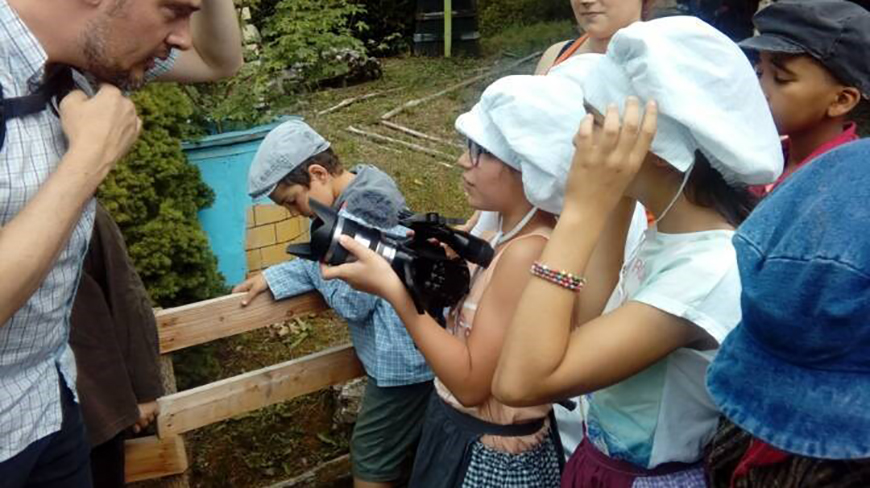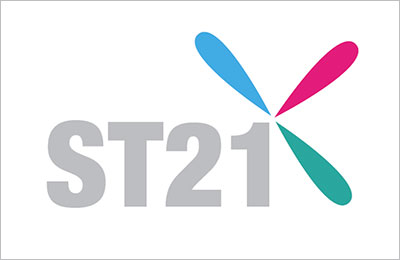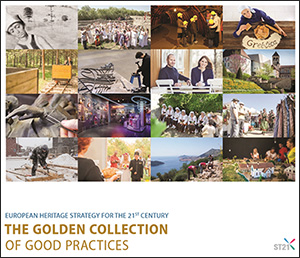Location of the initiative:

Relation to Strategy 21 Recommendations:
K2 - Implement measures to encourage young people to practise heritage
Time span of the initiative:
Start Date: 2005 / End Date: Annual programme
Motivation / Methodology
Objective: the art and cultural education of children and young people during school holidays. Welcomed at heritage locations throughout the area concerned, young people have access to multidisciplinary activity programmes: workshops, dramatised visits, treasure hunts, readings, dance, performances and practice of the digital arts to familiarise them with the heritage.
Target group: young people from the priority areas, both urban and rural; young people registered at community centres, youth and culture centres, leisure centres and rural community centres.
Heritage: each year, several hundred sites (monuments, museums, archives, towns and areas of artistic and historical importance, industrial heritage, archaeological sites or intangible heritage) are open to young people for them to discover something special and enjoy a valuable opportunity to engage in artistic and cultural activities. “It’s my heritage!” enables children and young people to develop their taste for heritage and the arts and broaden their knowledge, and helps them gain a better understanding of the integration of a heritage location into its geographical and cultural environment through an attractive and scientifically demanding approach focusing on discovery of the heritage and artistic and experimental practice: documentary production, interactive visits, live shows, arts and crafts, etc.
The enlistment of professional artists provides an added dimension and helps young people to familiarise themselves with the heritage.
Wide variety of players in all fields: dialogue and discussions between young people, speakers and facilitators at each of the participating sites, focusing on a cultural and artistic project. Through this interaction, the programme fosters the training of activity leaders at facilities catering for children and young people, and the training of heritage site facilitators. It contributes to the further development and structuring of working habits between professionals.
Change / Impact
50,000 participants in 2018 (+ approx. 26,000 for the restoration work), with the number of boys and girls more or less evenly split: 44% of children are between 9 and 12 years of age and 20% are teenagers and young adults. 64% of the beneficiaries come from priority neighbourhoods. Most of the projects take place during the summer holidays (only 17% of projects are run in the school winter holidays or as extracurricular activities throughout the year).
Heritage diversity: collections, built heritage, urban and rural complexes and intangible heritage. More and more projects involve a group of sites rather than a single monument or museum (310 sites covered by 193 projects in 2018).
The projects call for a variety of artistic disciplines, many of them intersecting: photo reports in towns of artistic and historical importance, audio reports with a collection of statements on local traditions, short scenes from ancient tragedy acted by children wearing masks made in the preceding workshop, production of models using various types of vegetation, stories inspired by the built environment or poems inspired by paintings, etc.
The projects that incorporate a digital dimension (video, photographs or digital creation) are particularly prominent, as are the more classical plastic arts, closely followed by architecture and audio-visual media (cinema, animated images). 2018 also saw the emergence of new types of project: urban walks, fun ways of discovering the living environment (architecture, urban complexes, neighbourhoods, etc.).
Partnerships: over 40% of the projects have only one partner, more than 30% have two partners and 25% have three or more. Most of the project promoters are heritage establishments or services and partners of youth sector bodies (half in the public sector and half in the voluntary sector).
Lessons learned
All the areas involved work to help disadvantaged groups: each year, this scheme, led by the Ministry of Culture and the General Commission for Territorial Equality (Commissariat général à l’égalité des territoires – CGET) reaches several thousand young people registered at community centres, youth and culture centres, leisure centres and rural community centres. Organised outside school hours, C’est mon patrimoine! has involved over 420,000 young people since 2005.
Integrated and inclusive approach: heritage sites, to be found throughout the areas concerned, are a means of providing artistic and cultural education and enable visits to be made and works to be studied, and are an opportunity for artistic and cultural activity and transfer.
Forging local partnerships: these projects, carried out at territorial level, enable a large number of players to engage in dialogue, compare their experiences and share information on the construction and implementation of an artistic and cultural project that will benefit future generations.
Contact information
Franck Guillaumet
Direction générale des patrimoines - Ministère de la culture
[email protected] ;
https://cestmonpatrimoine.culture.gouv.fr/nous-contacter
https://cestmonpatrimoine.culture.gouv.fr
Source of financing
Public funding
DETAILED INFORMATION ON FUNDING
The scheme is co-ordinated, at national level, by the Directorate General for Heritage at the Ministry of Culture and by the General Commission for Territorial Equality in pursuit of their shared objectives to bring about social cohesion, provide access to culture and contribute to cultural democratisation. At regional level, it is led by the regional cultural affairs directorates and the regional youth, sports and social cohesion directorates under a dynamic partnership forming part of the urban policy, in collaboration with the département directorates for social cohesion and population protection. In 2018, the Ministry of Culture and the General Commission for Territorial Equality significantly increased their financial support for the scheme. The community education federations are involved in the scheme at national (co-ordination and communication), regional and, indeed, local level. The scheme also draws on national or local partnerships with the National Monuments Centre and various institutions in all heritage fields. The local and regional authorities can also be involved in the programme, either financially or as project promoters.





